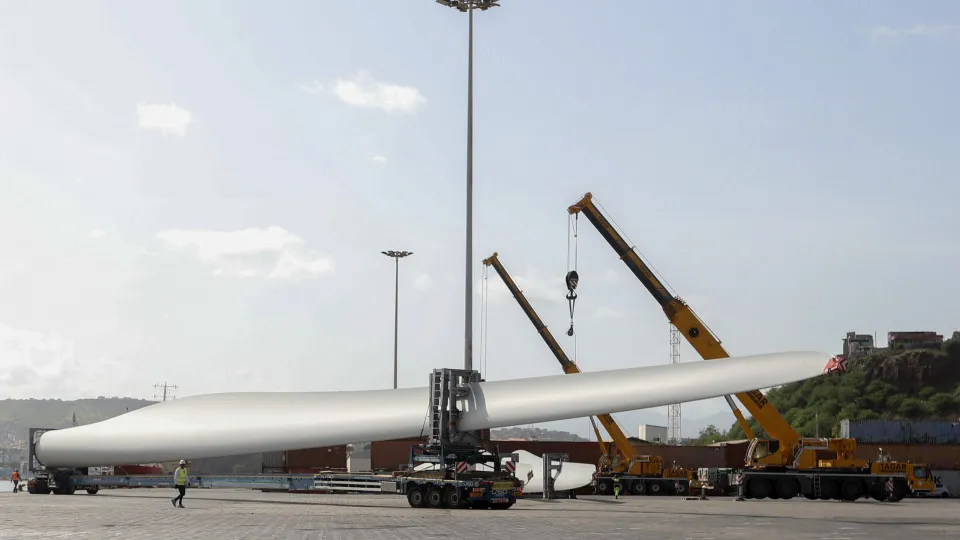
The current turbines have a nominal capacity of 850 kW, while the new ones reach up to 4,500 kW. “We are talking about units five times more powerful, capable of producing more energy and ensuring that wind energy represents up to 30% of the national production,” stated the technical director of Cabeólica, Valdemar Lopes, at Porto da Praia, during the unloading of materials from a ship that docked on Saturday.
Once installed, these turbines will become the “tallest structures in the country,” standing at 105 meters up to the hub and about 180 meters to the tip of the blade, according to the representative.
The project aligns with the national energy transition goals for 2025/2026, aiming to increase the renewable share in the energy mix to at least 30% and reduce fossil fuel dependence.
By 2030, Cape Verde aims to achieve 50% renewable energy.
“With this expansion, the country becomes less dependent on international factors beyond our control, ensuring greater sustainability and energy security,” he added.
The turbines currently generate energy from winds of four meters per second, while the new ones start producing from just three meters per second, offering greater efficiency, Lopes explained.
They are also technologically more advanced, adapting to the complexities of island grids.
The new turbines are part of the expansion project of Cabeólica, which includes components such as blades, towers, and nacelles.
Transportation to the Santiago Wind Farm begins on September 3 and is expected to last about two weeks.
“We had to study the entire route, from the port to the Wind Farm, adjusting the path through city streets due to the blades’ length of up to 75 meters. It’s a logistical challenge, but everything is proceeding according to schedule,” stated Valdemar Lopes.
The transport operations will pass through areas in Praia city like Lém Ferreira, Achada Grande, the airport, and São Francisco, with support from various entities, including the National Police, to minimize traffic impacts.
The equipment will be moved primarily outside of peak hours.
International companies specializing in logistics and turbine installation are supporting the entire process.
The expansion is expected to reduce over 50,000 tons of carbon dioxide (CO2) per year, reaching 100,000 tons with the overall operation of Cabeólica, while reinforcing energy independence with turbines and batteries and making electricity more competitive.
“In October, we expect to produce the first kilowatts, with the gradual commissioning of the entire project. By the end of the year, the battery energy storage system will also be operational, increasing the injected energy capacity and network stability,” the technical director further anticipated.




